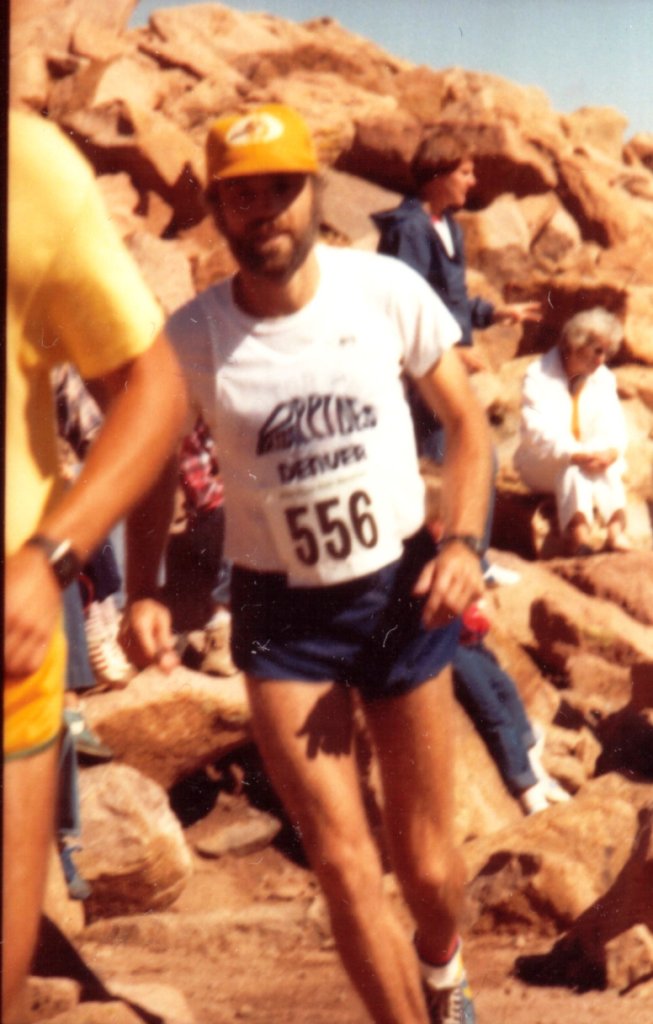Student: Mile high Denver! You were there from 1968 to 1981.
Professor: Yes, I was assigned to the Nut Lab, that is, to the US Army Medical and Nutrition Laboratory. That’s near where Eisenhower went and did his cardiac rehabilitation.
From: http://www.endurance-education.com/
Student: And your picture on this website’s home page shows you running half way up the Pikes Peak Marathon. WOW, you ran up and up, ascending some 7,700 feet (2347 m) to the top of that 14,115 foot (4300 m) mountain.
Professor: Look at that picture carefully:
- Maybe you can see the glassy eyes glued on the runner ahead. Probably you cannot see me breathing very deeply although not rapidly;
- Most likely I was moderately gasping for breath, still could feeling I was catching my breath.
Student: How much higher up that mountain was it that you could not catch your breath?
Professor: Vertically, well:
- That picture was taken at about 10,000 or 11,000 feet elevation, and
- It was maybe at about 12,500 feet, well, another 3 miles running, I really noticed I was getting quite short of breath and had to slow down my pace ‘to catch my breath’.
Student: Are there more sensations to the undifferentiated symptom of Dyspnea in addition to ‘gasping for breath’?
Professor: Please click on this link:
An American Thoracic Society Statement: Update on the Mechanisms … of Dyspnea 2012
to see these Subjective Qualities of Dyspnea.
Student: According to ATS, the following qualities are said to contribute to dyspnea:
- Work / Effort
- Tightness
- Air Hunger / Unsatisfied Inspiration
- Other Qualities of Dyspnea
Professor: And today is a BIG Holiday in the USA. Off for a long hike with Anne’s Grandkids and their Mom and Dad.
Student: Will there be more vignettes on the symptom clusters of dyspnea next week.
Professor: Yup!!!!
Take Home Message: “Dyspnea is a complex symptom….” (Parshall et al., 2012)
Next: Discrete symptoms, subordinate, and ordinate clusters of undifferentiated Dyspnea plus a start at understanding the physiological substrata.
Reference
Parshall MB, Manning HL, Bourbeau J, Calverley PM, Gift AG, Harver A, Lareau SC, Mahler DA, Meek PM, O’Donnell DE. (2012) An official American Thoracic Society statement: Update on the mechanisms, assessment, and management of dyspnea. Am J Resp Crit Care 185: 435-452.
